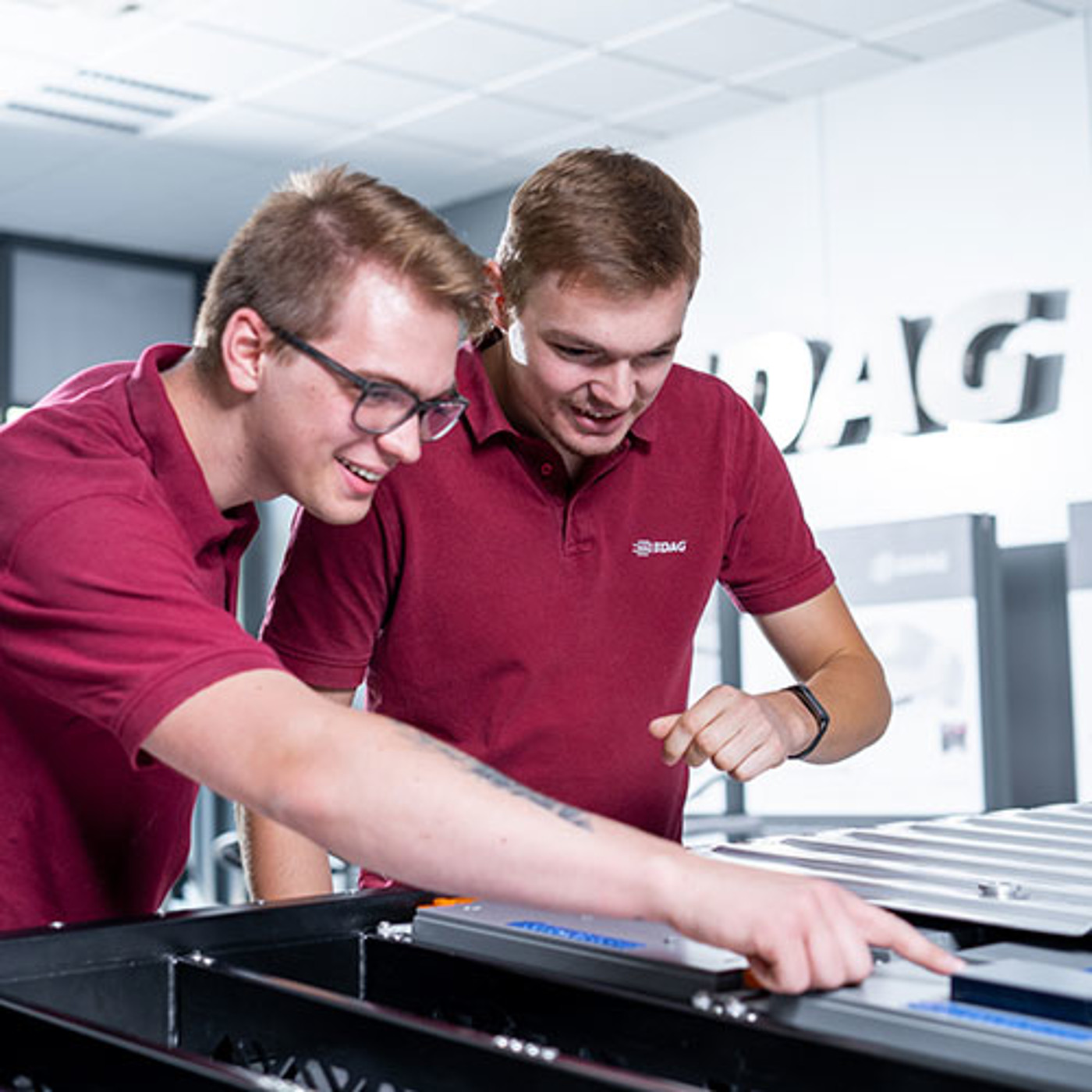
Body in white
New materials, new steel qualities, design amendments – in the course of time, a great many different challenges and technologies have had their effect on a vehicle's body in white.
The aim is always the same: optimum product properties at minimum cost and weight. Our task is to ensure that no conflicting aims arise between these new requirements and quality standards. And, of course, bearing the subsequent production in mind. We call this production-optimised development.
The first stage is usually virtual. We simulate the development concepts in order to optimise their stiffness, strength, safety, crash performance and of course feasibility. Following this, our test department carries out the validation process.
The development procedure is part of our tried and tested process landscape. From the approval procedure, parts list and the monitoring of deadlines, cost and weight, to change management, assembly support and supplier management – we accept responsibility for the development of complete bodies in white, and act as a system integrator at all relevant interfaces.
Doors, lids, gates
Over the years, door, lid and gate systems have developed into highly complex modules.
The aim is to meet not only the technical, but also the ergonomic and legal requirements of the module.
To ensure that the design will not have to be altered at a later date, attention is paid to the joints and to assuring technical feasibility during the design validation phase.
Our development work focuses just as much on areas such as acoustics (e.g. wind noise) or ease of locking as it does, for instance, on pedestrian protection: from the concept phase, design, simulation and validation, through to the finished series product.
In addition, we also work on innovative material concepts for vehicle manufacturers and system suppliers, to meet product requirements that might not yet be important, but very soon will be.
Interior
The customer's comfort plays a central role in the development of interior components. The car needs to feel right as soon as he gets into it for the first time. A feeling that is typical for that particular brand of car and clearly distinguishes it from other brands. At EDAG, we know what to do to ensure that the first, decisive impression is positive.
And, of course, we know that it is not simply a matter of the quality of the materials and how they are used. Much more to the point, we bring quality, functionality, ergonomics, producibility and stringent safety requirements into line with each other. And, of course, we also keep an eye on costs, deadlines, product specifications and legal requirements.
From the earliest stages of a project, we apply ourselves to matters such as styling feasibility, space and ergonomic tests and the drawing up of technical specifications, to ensure that the interior will make this decisive impression: and this pays off. At later stages, our experienced, in-house engineers continue this process with the design layout of the components and modules, including, for instance, the instrument panel or door trims.
Depending on what has been agreed with regard to responsibility for the project, we can take on the management of the system suppliers for you, and responsibility for module development with the achievement of functional targets.
We offer the following solutions and services to meet your needs:
Exterior
What applies for the interior applies equally for the exterior: the outward appearance presented by a car must conform with the values typical of the particular brand. The same also applies to the development of the add-on parts. For spoilers, panels, windows, roof systems or complete modules, e.g. bumper systems, we are the engineering specialists for add-on parts.
In addition, working within a network of OEMs, suppliers and tool makers, we also guarantee active and passive safety requirements, for instance for passenger and pedestrian protection.
We offer the following solutions and services to meet your needs:
Dimensional Management
In modern cars, it is essential to maintain constant clearance between adjacent parts. As small a clearance as possible and low tolerance are indicative of high quality and improved vehicles. An easily recognisable quality feature that is subject to increasingly stringent requirements. We see dimensional management (tolerance management) as a way of permitting the greatest possible component tolerances during the development phase while at the same time complying with geometrical target specifications.
The advantage to you is obvious - the high, reproducible geometrical quality of your products. And therefore better vehicles for your customers.
We offer the following solutions and services to meet your needs: